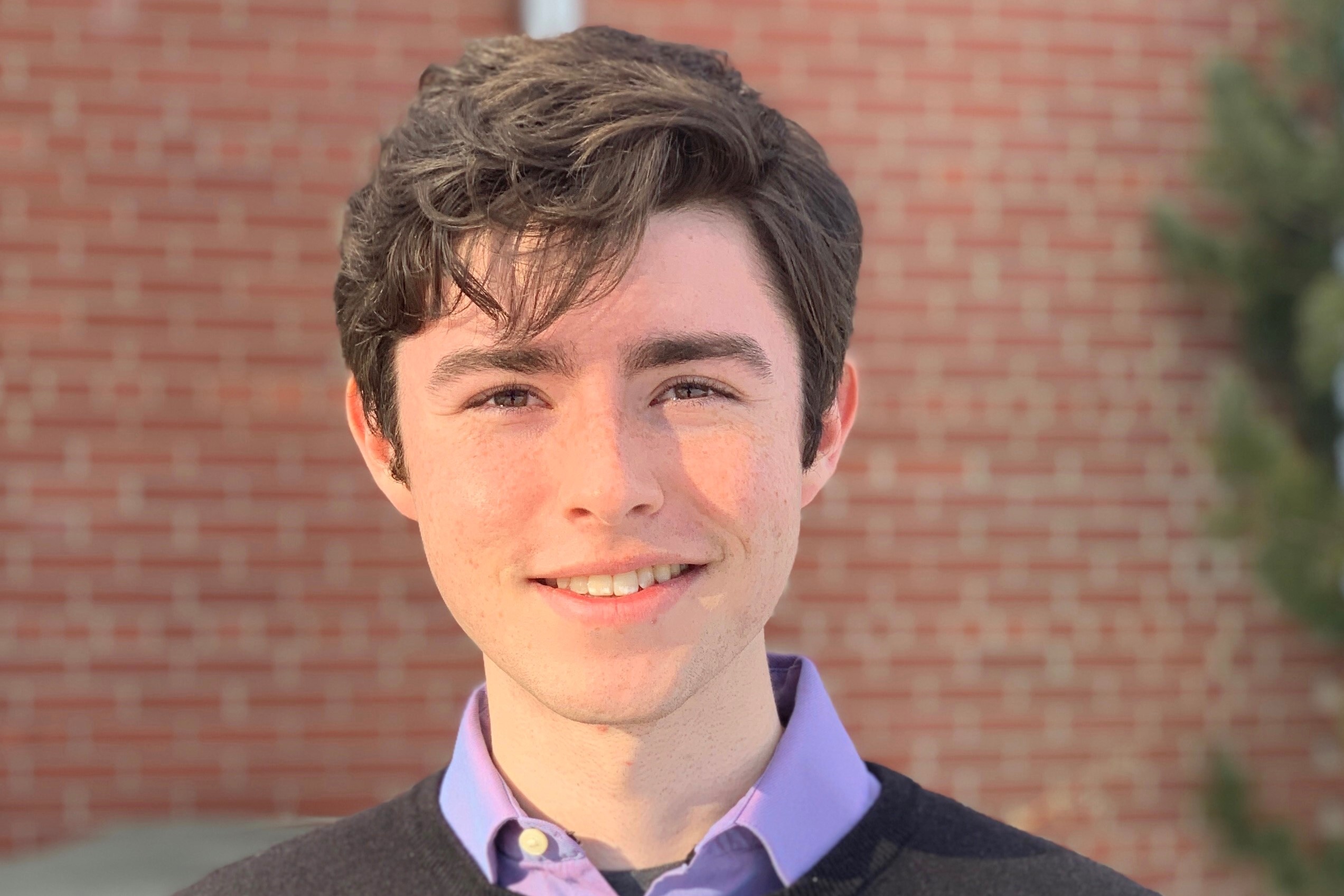Growing up in western Connecticut, landscape architecture student Stephen Kelly felt familiar with New York City, the place where he hopes to begin his career. When asked what he thought was a pressing issue of his generation, he said finding a way to integrate environmental and social justice in a way that benefits both, and making the government work for all of us in a way that it hasn’t in the past. As a student in the College of Agriculture, Health and Natural Resources, Kelly is well aware of how urgent our need to address the environmental crisis, and he feels that landscape architects can be stewards of the land while creating sustainable and healthy outdoor spaces. Read more about his experiences as a UConn student.
What attracted you to the UConn College of Agriculture, Health and Natural Resources?
When I came to UConn for my sophomore year, I knew I was going for landscape architecture. I was a transfer from Purdue University, where I was studying engineering my freshman year, and for a few reasons, I escaped to UConn. CAHNR and the landscape architecture (LA) program were attractive to me for their scholarship opportunities and encouraging atmosphere.
Why did you choose your particular major?
Coming from engineering, I knew I wanted a major that would engage my more creative/artistic impulses while maintaining the problem-solving challenges that had drawn me to STEM. Ultimately, I am not very stemmy. I do like trees and plants though, and they could be considered, in some circles, as being stemmy. LA can also involve a lot of interpersonal interaction with all types of people from diverse backgrounds. It is a career path which encourages constant learning.
Which one of your UConn activities, internships or jobs was the most memorable? Why?
My most memorable internship/job was my work last summer at William Kenny Associates and their native plant nursery by the apt name of NATIVE. Both the office and nursery were in my hometown of Fairfield, Connecticut, so the commute was nice. I was thrown into a new, alien task just about every other day. I had work ranging from doodling foliage to installing trees and operating large machinery. It was occasionally wildly anxiety inducing, but I learned so much about every step of building a landscape that I was happy to go back and work this summer.
Name two other experiences that have enriched your studies.
My involvement with the a capella group Notes Over Storrs gave me the opportunity to meet so many other students and make close friends, which is not generally easy as a transfer. It also allowed me to keep singing in college, having sung in organized groups since elementary school and I wasn’t quite ready to let it go.
UConn’s student chapter of the American Society of Landscape Architects (ASLA) helped me to connect with local professionals as well as other students in the program. This year I am president of our chapter. Collaboration like this is really critical in building design skills of any value.
What has been the biggest challenge in your UConn career?
My biggest challenge is and might always be my poor time management. Big procrastinator. It’s not great. I insist I’m working on it.
When do you expect to graduate? What then?
I’ll be graduating hopefully in May 2021. After that I hope to find some landscape architecture firms in NYC that do some cool public work like plazas and parks and community planning. A government job would also give me access to similar projects along with direct community engagement. Ideally, I get a job.
Has the COVID pandemic affected your studies or research?
It is an inevitably clunky transition to all online classes when so much of our design work relies on studio access and constant real-time collaboration between peers and professors. Everyone is trying their best and we are certainly figuring out a rhythm, even exploring the strengths of online learning over in person. Still, it is a graphically and spatially oriented major, and a screen is pretty two dimensional.
Is there anything else you would like us to know about you?
My friends in landscape architecture are largely to blame for any success I have in the major. There aren’t very many of us (just seven students in my graduating class), but we help each other out and professors like Dr. [Mariana] Fragomeni make a point to support us in supporting each other. It is a challenging major, but it is fun and rewarding, so if you are thinking of joining, feel free to reach out to me! Also, I like to ski and write, and I like birds and my favorite color is orange.



